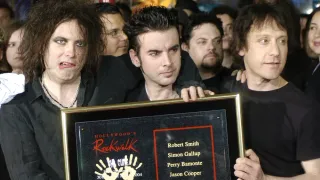July 24, 2024
Behind 'Queen of the Deuce' -- The Outrageous Story of Porn Maven Chelly Wilson
Steve Duffy READ TIME: 7 MIN.
In pre-Giuliani New York City, the Times Square area known as The Deuce was ground zero for porn. The area, which centered on 42nd Street but extended along Eighth Avenue to 50th Street, became the subject of a HBO narrative series that ran three seasons; but missing from it is the story of Chelly Wilson, who operated a number of porn theaters from her office above the Adonis Theatre, one of the largest movie houses in New York with nearly 1500 seats that showed gay porn throughout the 1970s and 1980s before being closed down 1989.
Too bad, because Wilson is one of the most interesting characters to thrive in the infamous adult entertainment zone. Fortunately, her story is told in the documentary, appropriately entitled "Queen of the Deuce" that is available on Amazon Prime and Apple TV. She was a larger-than-life character who escaped her native Greece immediately before the Nazi occupation. A canny business woman, she began by operating a hot dog stand before finding her true vocation as the Deuce's most successful entrepreneur. Wilson not only managed the theaters, but produced the low-budget porn films that played in them. She also was one of the first theater owners to show gay porn, most notably in The Adonis.
Wilson was, according to her daughter Bondi Walters, was either loved or hated – there was no in-between. Frequently seen chomping on a cigar, she was famous for her poker parties with Mafia dons; and, though married, carried on affairs with women.
EDGE spoke with Walters and "Queen of the Deuce" director Valerie Kontakos about the film and its endlessly fascinating subject.
EDGE: Bondi, after watching this film, all I could say was, "Wow, what a woman!"
Bondi Walters: Thank you. It's wonderful to hear. You loved her or hated her. There was no in-between.
EDGE: Valerie, what inspired you to want to make a film about telling Chelly's story?
Valerie Kontakos: It's not hard to want to do a story about a person like Chelly because she was so larger than life. She was wonderful and had all the elements of a fantastic, full life. As a storyteller, it was a no-brainer. She had everything you needed to tell an amazing story and was the perfect character.
EDGE: Bondi, what was important to you in telling your mom's story?
Bondi Walters: That somebody tells the whole story and not just the story about the theaters. That was extremely important to me. She was much more than someone who owned gay porn theaters.






